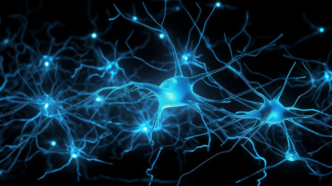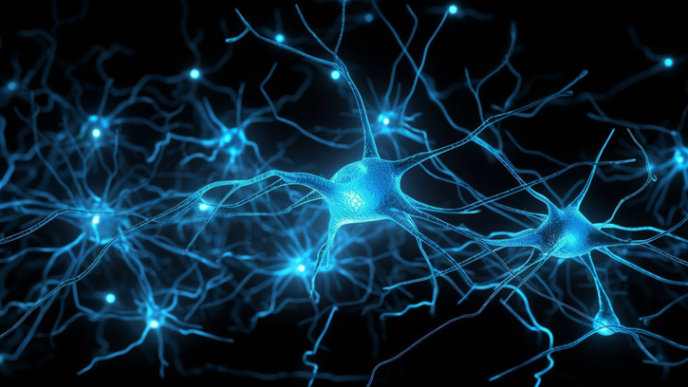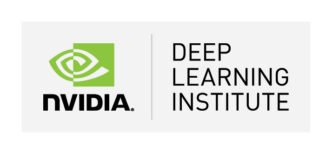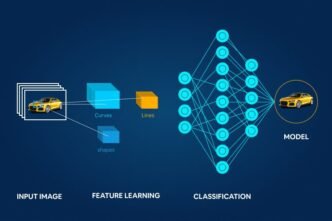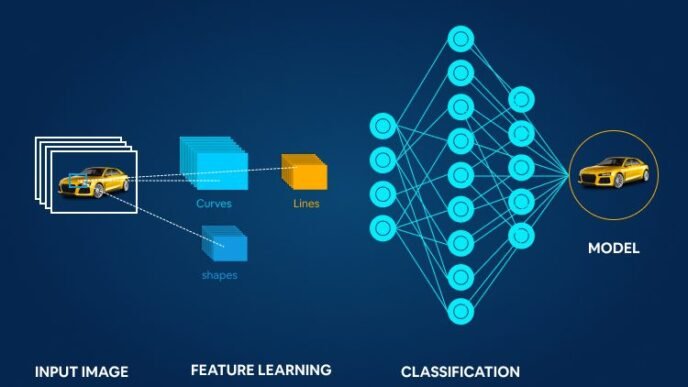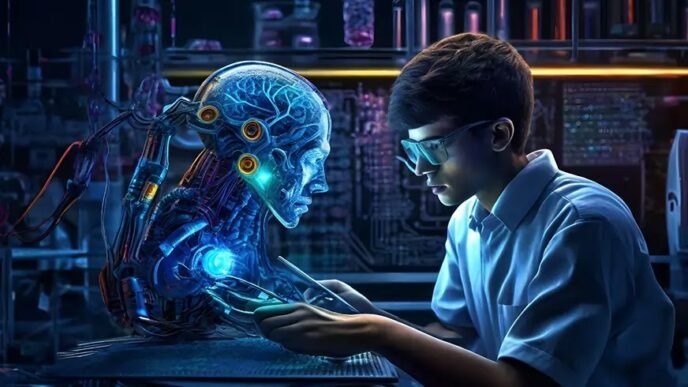Introduction
In the rapidly evolving world of artificial intelligence (AI) and machine learning (ML), Scikit-learn has emerged as one of the most influential and widely used libraries. Since its inception, Scikit-learn has played a pivotal role in democratizing machine learning by providing accessible, efficient, and robust tools for data analysis and modeling.
This comprehensive blog explores Scikit-learn’s journey from its introduction to its transformative impact on the AI ecosystem. We delve into its development, funding, adoption by organizations, expert opinions, current updates, and its future trajectory.
Table of Contents
2. The Genesis and Development of Scikit-learn
3. Transforming the AI Ecosystem
5. Adoption by Organizations Worldwide
6. Expert Opinions on Scikit-learn
7. Current Updates and Future Developments
8. Conclusion
9. Continuing the Conversation
1. What is Scikit-learn?
Scikit-learn is an open-source Python library that provides simple and efficient tools for predictive data analysis. Built on top of NumPy, SciPy, and Matplotlib, it offers a range of supervised and unsupervised learning algorithms through a consistent interface.
Key Features:
• Accessibility: User-friendly API that lowers the barrier to entry for machine learning.
• Versatility: Supports classification, regression, clustering, dimensionality reduction, model selection, and preprocessing.
• Performance: Efficient implementations that can handle large datasets.
• Community Support: Strong backing from a vibrant open-source community.
2. The Genesis and Development of Scikit-learn
Origins
Scikit-learn was initially developed as a Google Summer of Code project by David Cournapeau in 2007. The name “Scikit” (short for “SciPy Toolkit”) reflects its goal to integrate with the broader SciPy ecosystem.
Development Milestones
• 2007-2010: Early development focused on creating a library that could complement existing scientific computing tools in Python.
• 2010: Release of version 0.1, marking the first public release.
• 2010-2013: Key contributors like Fabian Pedregosa, Gaël Varoquaux, Olivier Grisel, and Vincent Michel joined, significantly expanding the library’s capabilities.
• 2012: Version 0.11 introduced the current API and expanded algorithm support.
• 2013-Present: Continuous enhancements, including more algorithms, improved documentation, and performance optimizations.
Development Philosophy
• Consistency: Uniformity in API design allows users to switch between different algorithms easily.
• Simplicity: Emphasis on clear documentation and examples to facilitate learning.
• Collaboration: Open development model encourages contributions from developers worldwide.
3. Transforming the AI Ecosystem
Democratizing Machine Learning
Scikit-learn has made machine learning accessible to a broader audience, including students, researchers, and industry professionals.
• Education: Widely used in academic courses and tutorials.
• Research: Facilitates quick prototyping and testing of models.
• Industry: Enables companies to implement ML solutions without extensive computational resources.
Standardization of Practices
• Unified API: Sets a standard for other libraries, promoting interoperability.
• Best Practices: Encourages proper data preprocessing, model evaluation, and validation techniques.
Bridging the Gap Between Theory and Practice
• Practical Implementation: Translates complex mathematical concepts into usable code.
• Extensive Examples: Provides a wealth of examples and datasets for hands-on learning.
4. Funding and Support
Institutional Backing
Scikit-learn’s development has been supported by various institutions:
• Inria: The French Institute for Research in Computer Science and Automation has provided significant support, hosting core developers.
• Fondation Inria: Offers funding and resources for continued development.
Grants and Sponsorships
• NumFOCUS: A non-profit organization that supports open-source scientific computing projects, including Scikit-learn.
• Google Summer of Code: Early support through mentorship and development opportunities.
Community Contributions
• Open-Source Contributions: Developers worldwide contribute code, documentation, and bug fixes.
• Donations: Financial contributions from individuals and organizations support infrastructure and development efforts.
Corporate Support
While Scikit-learn does not have direct corporate funding, many companies contribute indirectly:
• Employee Contributions: Companies like Amazon, Microsoft, and IBM have employees who contribute to the library.
• Sponsorship of Events: Funding workshops, conferences, and sprints that focus on Scikit-learn development.
5. Adoption by Organizations Worldwide
Scikit-learn is used extensively across various industries due to its reliability and ease of use.
Technology Companies
• Spotify: For music recommendation systems.
• Uber: In data analysis and predictive modeling.
• Airbnb: For price optimization and user behavior analysis.
Finance and Banking
• JPMorgan Chase: Risk assessment and fraud detection.
• Capital One: Customer segmentation and credit scoring.
Healthcare
• Pfizer: Drug discovery and clinical trial analysis.
• Johns Hopkins University: Research in medical imaging and diagnostics.
Retail and E-commerce
• Walmart: Inventory management and sales forecasting.
• Zillow: Real estate price estimation models.
Automotive
• Toyota Research Institute: Autonomous driving research and development.
Education and Research
• Universities: Used extensively in academic research and coursework.
• Research Institutions: For data analysis in various scientific fields.
6. Expert Opinions on Scikit-learn
Dr. Sebastian Raschka, Author of “Python Machine Learning”
“Scikit-learn is an indispensable tool for anyone working in machine learning with Python. Its consistent API and extensive documentation make it ideal for both beginners and experienced practitioners.”
Andrej Karpathy, Director of AI at Tesla (as of knowledge cutoff)
“The simplicity and reliability of Scikit-learn make it a go-to library for rapid prototyping and experimenting with different algorithms.”
François Chollet, Creator of Keras
“While deep learning has its specialized frameworks, Scikit-learn remains essential for classical machine learning tasks and data preprocessing.”
Gaël Varoquaux, Core Developer of Scikit-learn
“Our goal has always been to make machine learning accessible without compromising on performance. The community’s contribution is what makes Scikit-learn robust and versatile.”
7. Current Updates and Future Developments
Recent Releases
As of October 2023, the latest stable release is Scikit-learn 1.3.
Highlights:
• New Algorithms: Implementation of novel algorithms like HistGradientBoosting for improved performance.
• Enhanced Documentation: More examples and user guides.
• Performance Improvements: Optimizations for faster computation and reduced memory usage.
Ongoing Developments
• Integration with Other Libraries: Improved interoperability with libraries like Pandas, NumPy, and SciPy.
• GPU Support: Exploring support for GPU acceleration to handle larger datasets.
• Improved Model Interpretability: Tools for better understanding of model predictions.
Future Roadmap
• API Enhancements: Continuous refinement for better usability.
• Community Engagement: More tutorials, workshops, and collaborative projects.
• Expansion of Algorithm Suite: Inclusion of state-of-the-art algorithms as they become relevant.
8. Conclusion
Scikit-learn has undeniably transformed the AI ecosystem by making machine learning accessible, efficient, and standardized. Its impact spans education, research, and industry, serving as a foundational tool for data scientists and ML practitioners.
The library’s success is attributed to:
• Robust Design: Emphasis on simplicity and consistency.
• Community Support: Collaborative development and widespread adoption.
• Continuous Improvement: Regular updates and responsiveness to user needs.
As AI continues to evolve, Scikit-learn remains poised to adapt and contribute significantly to future advancements. Its role in bridging the gap between complex algorithms and practical application ensures it will remain a staple in the machine learning toolkit.
9. Continuing the Conversation
Engage with the Community
• Contribute to Scikit-learn: Developers and users are encouraged to contribute code, report issues, and improve documentation.
• Join Discussions: Participate in forums, mailing lists, and GitHub discussions to stay updated and collaborate.
Learning Resources
• Official Documentation: Comprehensive guides and tutorials are available on the Scikit-learn website.
• Books and Courses: Numerous books and online courses incorporate Scikit-learn for teaching machine learning concepts.
Stay Updated
• Release Notes: Follow the latest updates and release notes for new features.
• Workshops and Conferences: Attend events like SciPy and PyData conferences to learn and network.
Final Thoughts
Scikit-learn exemplifies the power of open-source collaboration in advancing technology. Its commitment to accessibility and excellence continues to empower individuals and organizations to harness the potential of machine learning.
By exploring Scikit-learn’s journey, contributions, and impact, we gain insight into how a well-crafted tool can shape an entire field. Whether you’re a seasoned data scientist or just beginning your AI adventure, Scikit-learn offers a gateway to understanding and applying machine learning effectively.



